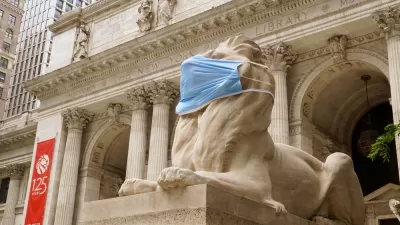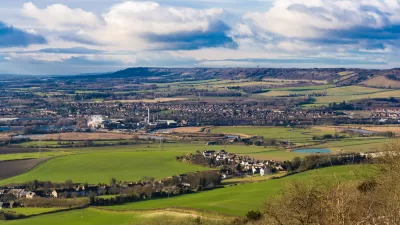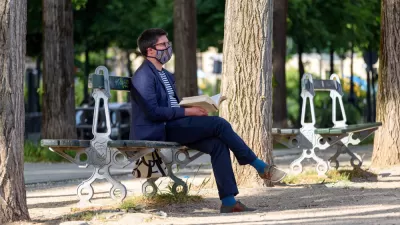A book review of a book published this year with the title, "The Art of Classic Planning: Building Beautiful and Enduring Communities," offers stinging criticism of the past and present of planning.

"Despite the fact that there are more urban planners than ever, the built environment only seems to grow steadily worse."
So begins Anthony Paletta’s book review of The Art of Classic Planning: Building Beautiful and Enduring Communities, written by Nir Haim Buras and published by Harvard University Press.
The book, which was published in January 2020, takes aim at the “paradox” described above. According to Paletta’s explanation, "[the] voluminous study draws upon a wonderful range of real locations for taking lessons. Buras’ argument, in large part, is that the prior canon of planning literature had access to almost all of these things, and yet persistently drew either the wrong or incomplete conclusions."
Before the review is over, Paletta compares planners to plastic surgeons, and name drops Camillo Sitte, Kevin Lynch, and Le Corbusier. Buras inspires this range, however, as Paletta is careful to note:
Buras seems to have been everywhere, and draws on examples from all of these places in demonstrating sound planning from the Maidan in Isfahan in Iran, to Andrassy Avenue in Budapest, to Jai Singh’s plan of Jaipur, to Commonwealth Avenue in Boston. He dedicates significant attention to centuries of planning concepts of every sort of variety, from the McMillan Plan for Washington D.C. to Feng Shui, Vastu Shatra, and the Spanish colonial Laws of the Indies concerning colonial construction, to recent psychological studies of responses to built environments. It is a deeply impressive and erudite contextualization of a massive range of material.
FULL STORY: Learning From A Century Of Bad Urban Planning

Maui's Vacation Rental Debate Turns Ugly
Verbal attacks, misinformation campaigns and fistfights plague a high-stakes debate to convert thousands of vacation rentals into long-term housing.

Planetizen Federal Action Tracker
A weekly monitor of how Trump’s orders and actions are impacting planners and planning in America.

Chicago’s Ghost Rails
Just beneath the surface of the modern city lie the remnants of its expansive early 20th-century streetcar system.

Bend, Oregon Zoning Reforms Prioritize Small-Scale Housing
The city altered its zoning code to allow multi-family housing and eliminated parking mandates citywide.

Amtrak Cutting Jobs, Funding to High-Speed Rail
The agency plans to cut 10 percent of its workforce and has confirmed it will not fund new high-speed rail projects.

LA Denies Basic Services to Unhoused Residents
The city has repeatedly failed to respond to requests for trash pickup at encampment sites, and eliminated a program that provided mobile showers and toilets.
Urban Design for Planners 1: Software Tools
This six-course series explores essential urban design concepts using open source software and equips planners with the tools they need to participate fully in the urban design process.
Planning for Universal Design
Learn the tools for implementing Universal Design in planning regulations.
planning NEXT
Appalachian Highlands Housing Partners
Mpact (founded as Rail~Volution)
City of Camden Redevelopment Agency
City of Astoria
City of Portland
City of Laramie





























